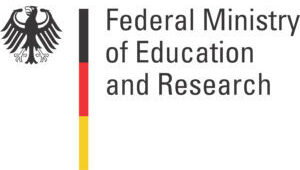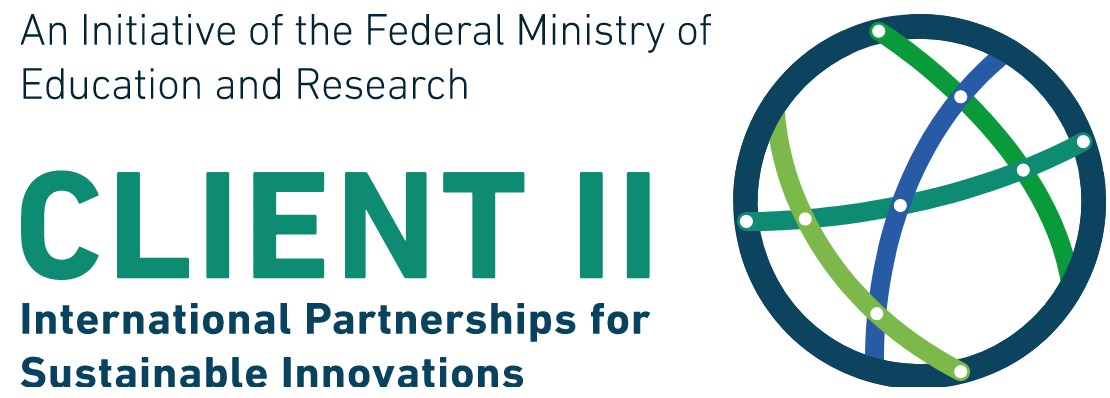Based on the findings from WP1.2, WP2.2 and WP2.3, this WP develops a comprehensive laboratory concept for the installation of instruments, procedures and test stands for the characterization and research of building materials and construction products. Essential material tests necessary for the effective implementation of the basic energy standards are identified and prioritized.
Currently in Vietnam in the standards The test methods listed are checked for completeness in the sense of the research objective and the list of essential tests is extended if necessary. Afterwards, a comparison with the test equipment and testing facilities available in the cooperating university and ministry laboratories takes place. Based on this, the need for test equipment and test equipment to implement energy standards is defined. The inventory of already existing on-site testing facilities and the possibilities of installing other test facilities is provided by employees of the Fraunhofer-IBP (scientific) and by employees of the company TAURUS (technically) performed. Further material properties relevant for other important building physical performance aspects (e.g. hygro-thermal behavior, durability or indoor comfort) are identified and provided for the second phase of the implementation. Here, too, a comparison with the possibilities on site and the determination of the need for testing and metrological facilities for the determination of hygrothermal characteristics, durability, comfort and other characteristics. Here are design requirements and necessary input data for advanced simulation models as a reference for the scope of investigation. Instruments and test systems that are suitable for testing (material parameter testing) and materials research (understanding and developing material and system behavior) are supplemented, developed and installed as far as possible in cooperation with the industrial partner TAURUS (if not possible, a Plan developed for future installation).
In this WP a mobile is test equipment for assessing the physical construction building behavior and indoor air quality in existing and residential buildings designed to partially set , tested and to measure in homes used.
The scope of the mobile test equipment to be developed (a collection of measuring instruments) will be designed in such a way that it will be possible to check compliance with the Vietnamese energy standard and to improve the hygiene and quality of the indoor climate , indoor air quality (VOC, PM2.5) and the To evaluate the overall energy efficiency of building systems in building operation . Also, the test equipment structural damage (eg moisture damage) and faulty versions (e.g. leaky window installation) are examined. While the concept takes into account the overall scope of the task, issues are prioritized for acquisition as part of the project budget.
To secure our future operational capability and further operation of the test equipment on the use in this project also, a responsible person is named on the NUCE collected the manuals and data sheets for the instruments and instructions for use (incl. Requirements for calibration and Güteüberwa chung ) created. The measuring equipment will later be used for research projects, for student projects as well as eg for review activities in practice. The test device as infrastructure of the Competence Center s for sustainable construction (see WP4.3) furnished by the Architectural Science group of Dr. Pham Thi Hai Ha professionally supervised . The NUCE provides a space for the storage and maintenance of the equipment and for the preparation of field operations. Mobile test equipment already available at NUCE will be recorded, documented and included in the overall concept of the mobile test equipment.
The test equipment will be deployed and tested in measurement campaigns spread throughout the project in up to 10 apartments in Hanoi and up to 10 apartments in HCMC. In the first and second housing commission and based on the measured s basic data in WP1.5 are to homes with special problems identified. The surveys and further measurements with the equipment are also used to extensively document relevant case studies for the teaching material (WP5.2 / WP5.3) and the publications (WP5.5 / WP5.6).
A. Laboratory Facilities
A concept for a laboratory facility is being developed. All necessary test equipment and test methods are to be defined here precisely, with measurement ranges, measurement accuracies, test boundary conditions and installation conditions with installation plan and their implementation be coordinated between the Fraunhofer IBP (scientific) and the industrial partner (technical). In the existing VIBM rooms, the measuring and testing equipment will be set up to determine the basic material properties required for the application of the Vietnamese energy efficiency standard and are relevant for the performance-oriented design (e.g. simulation studies, see WP3.4). The services in this WP are supported by the industrial partner TAURUS (a leading supplier of laboratory equipment) and adapted to the current VIBM program for the development of its own laboratory infrastructure (see Annex, Proposal for Cooperation). The support of the company TAURUS includes, planning, construction and a first briefing of the test personnel. The implementation of measurements with sample preparation, consideration of special application details, implementation of standards, evaluation, calibration and classification in the building physics context is carried out by employees of the Fraunhofer IBP. The preparation of the concept, the coordination with the on-site laboratories, the planning of new test facilities and finally the installation of the test facilities are about 3 months of scientific work and corresponding technical implementation by the company TAURUS in the form of technical drawings, orders and construction of On-site equipment, installation of operating software and evaluation software planned. The reacted measuring equipment to en According to current estimates, at least one disk device for determining the thermal conductivity of building and insulating materials and insulating , a pressure testing device for determining the compressive stress, and support in building a r means for determining the thermal resistance of glazing and building materials include. Depending on the support of the local partners, a facility is also planned to determine air permeability, watertightness and wind resistance.
B. Free Field Weathering Test Stand
A test stand is set up at the VIBM Free Field Testing Center to evaluate the hygrothermal resistance and durability of wall system samples. An air-conditioned chamber is designed so that a façade is oriented in a critically representative direction (solar radiation, wind speed, precipitation ). In the chamber, the room climate is controlled in a realistic comfort area. For calibration of the test stand and all sensor devices and controls are both conventional wall systems n including those from non-fired n Wall materials (e.g. aerated concrete, ACC, CBB) installed as a relevant pilot application in the new research facility. After calibration, the test bench is divided into two identical rooms with the same boundary conditions that model a realistic living environment (twin rooms). Both chambers are equipped with measuring instruments to record and control the indoor conditions as well as the material and system performance of the tested wall elements with regard to the energetic and hygrothermal behavior (e.g. thermal resistance, rain water absorption, airtightness, dilatation). One of the chambers serves as a reference. In the other n are specific materials and systems installed to their hygrothermal behavior and to assess their influence on the spatial state holistically. In this way, the performance of new wall systems can be compared directly with conventional wall structures.
C. Comparative Study of Materials and Systems
Following the implementation and calibration of the laboratory measurement equipment under a) a number of relevant materials and material systems are selected for comparative testing. These comparative tests should include relevant basic parameters such as thermal conductivity (insulation and building materials), heat transfer coefficient, air permeability, watertightness (windows), compressive stress, water absorption, diffusion resistance (insulating and building materials) as well as special durability characteristics such as water absorption and compressive stress after exposure to climate change. This is to ensure that standard quality standards are adhered to and that the results are internationally comparable. The selected materials are first tested in Vietnam and then sent to the Fraunhofer IBP,where the tests are repeated non-destructively on the same samples. By comparing the results, potential problems are identified and resolved through bilateral discussions and, if necessary, visits by German experts in Vietnam. A comparison of the results from the outdoor weather test bench with similar installations in Germany will not be possible due to the completely different climate. However, a comparison of numerical simulation results based on the determined material parameters is possible here and is carried out (see WP3.4). A comparison “artificialA comparison of the results from the outdoor weather test bench with similar installations in Germany will not be possible due to the completely different climate. However, a comparison of numerical simulation results based on the determined material parameters is possible here and is carried out (see WP3.4). A comparison of the results from the outdoor weather test bench with similar installations in Germany will not be possible due to the completely different climate. However, a comparison of numerical simulation results based on the determined material parameters is possible here and is carried out (see WP3.4). A comparison “artificial r Material weathering “, adapted to the possibility of artificial weathering on site, is to be carried out comparatively in the climate chambers of the Fraunhofer IBP Stuttgart in order to scientifically support and support the development of non-fired bricks from both institutions. Among other things, the numerical simulations are intended to reconstruct and validate the weathering conducted in the laboratories. The aim of the weathering experiments is to recreate the different climatic conditions within Vietnam and ultimately to develop meaningful test scenarios for the development of unfired bricks. For the execution of the comparative experiments 3 man months are planned from scientific side.
In addition to the measurements in WP3.3a and parallel to the tests in WP3.3b and WP3.3c, simulation studies are carried out with the simulation programs WUFI Pro and WUFI Plus (developed by the Fraunhofer IBP).
By comparing the experimental results with the simulation results, deviations and inaccuracies are detected and by adaptation of the simulation model Fixed. The researchers in Vietnam are trained to use the simulation. The simulation studies will continue to be performed to plan future real material tests and to extrapolate and extend results obtained, so that the long-term behavior of wall systems can be evaluated, and new material formulations can be developed by varying material parameters in the simulation.
In this WP, 5 simulation workstations for research and teaching (see also WP5.2) will continue to be set up by the university partners NUCE and TDTU.
On the basis of WP3.3, a far-reaching feasibility study is being prepared for a research infrastructure for the determination of characteristic values and building physics material research, which envisages realistic implementation phases.
A distinction should be made here between basic characteristics (e.g thermal conductivity, compressive stress, diffusion resistance, water absorption) which are determined at many locations and characteristics which are determined by a few selected research institutions in Vietnam due to their complexity or cost intensity (thermal resistance of large components, radiation characteristics, air permeability, Driving rain and wind resistance, special hygrothermal characteristics). Here, the scientific and theoretical part of the work is handled by the Fraunhofer IBP, while technology and prices are given priority by the industry partner TAURUS are defined and determined. For this work, 2 people are scheduled to be present at the beginning and end of the feasibility study over a period of one to two weeks in Vietnam. After that, the actual planning takes place in Germany in cooperation ar -operation with local partners. The organizational structures of such a facility, the necessary financial resources and other factors (eg space requirements, skills of the staff and operating costs) are estimated. The plan is then with the project partners VIBM, NUCE and TDTU, as well as with the scientific Be i Council and also with potential implementation partners (GIZ, kfW, UNDP, ifc, adb) and with the ministries (MoC, MoST) in order to initiate the establishment of an appropriate research infrastructure.
Universität Stuttgart
Institut für Gebäudeenergetik, Thermotechnik und Energiespeicherung (IGTE)
Pfaffenwaldring 35
70569 Stuttgart
Deutschland


